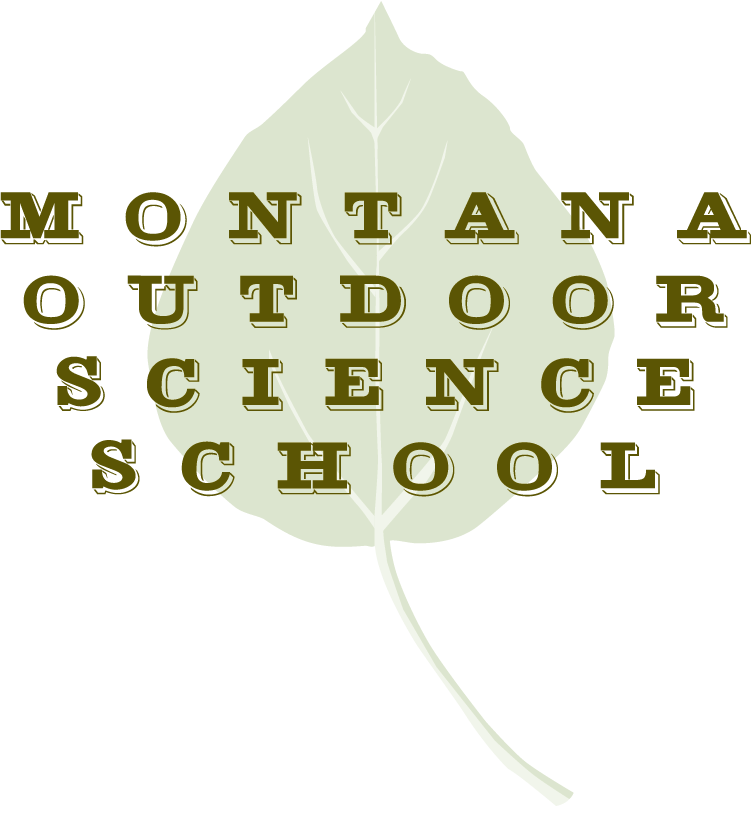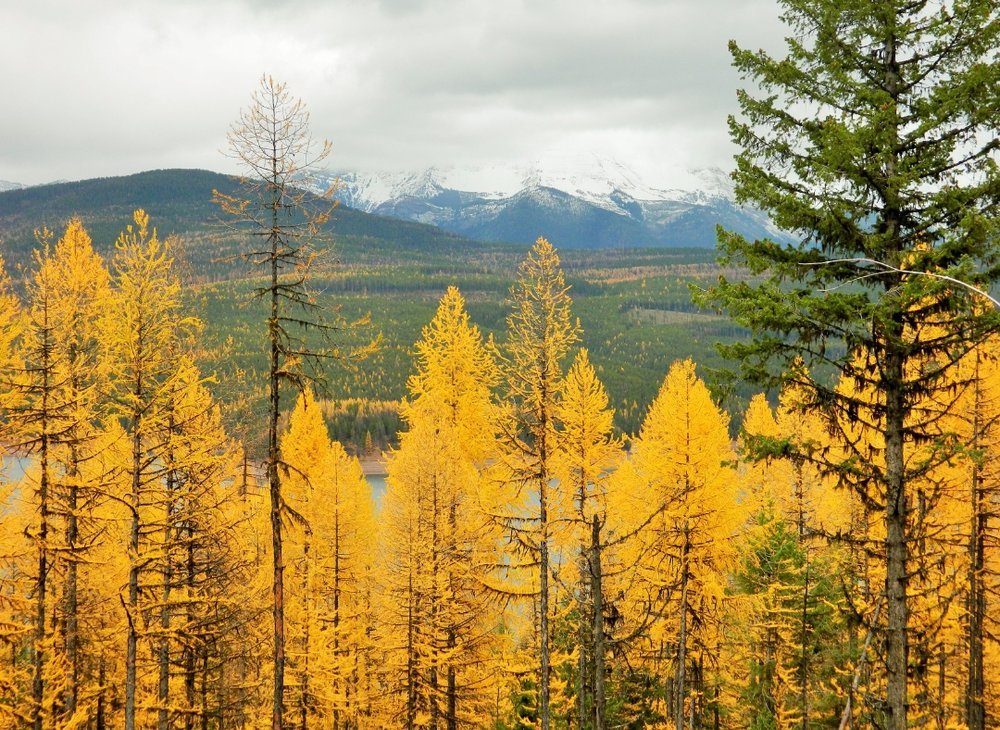Golden Advantage
By Emma Connors
MOSS FIELD NOTE #7
Western Larch trees in Montana during Fall.
Each fall, a peculiar event occurs on the hillsides of northern Montana... Some of the coniferous trees turn yellow! I was lucky enough to witness the beginning of this phenomenon in early October in Glacier National Park. Seeing the beautiful swaths of yellow and gold had me wondering why only some of the conifers change color while the rest remain dark green. Upon research, I learned that these color-changing trees are called larches or tamaracks. Their gold color is not only beautiful but also signals a competitive advantage over other Montana conifers. Two types of larches dot Montana hillsides. The most prevalent is the western larch, Larix occidentalis. The western larch prefers wet forests, cool slopes, and open ground, from low valleys up to the subalpine. That being said, they grow particularly well in dry, cold, snowy climates on rocky soils. Montana’s other larch is the alpine (or subalpine) larch, Larix lyallii. This variety thrives in windy alpine regions where other trees tend to struggle. Both varieties grow throughout the Pacific Northwest as well as the Rocky Mountains of British Columbia and Montana. In Montana, larches are particularly prominent as you move north, around the Seeley-Swan area, the Flathead, and Glacier National Park.
The larch is part of the Pinaceae family, which includes other conifers like true pines, cedars, firs, and spruces. As a conifer, it stores its seeds in cones, and its leaves grow in the form of needles. The western larch reaches heights of 60-80m tall. It has thick, reddish-brown, scaly bark that is fire-resistant. Deep cracks etch between bark scales as the tree grows and adds more rings. It drops its lower branches as it grows taller, a wildfire adaptation. The western larch’s pollen cones are yellow, while its seed cones are reddish-brown with white hairs dotting the lower section. Its needles, each 2-5cm long, grow in large groups of 15 to 30. The alpine larch is a smaller variety, growing up to 20m tall. Similar deep cracks draw between flakes of thin, reddish-purple bark. It, too has yellow pollen cones, but its seed cones are reddish-purple in color. Its needles grow in huge groups of 30 to 40. Both types of larches have needles that emerge as a soft blue-green and turn a bright golden yellow in the fall.
To understand why larches turn yellow, one must first understand the process of photosynthesis. Photosynthesis is the process by which plants take in sunlight and water, and then make their own food. It is carried out in the cells by chloroplasts, which contain chlorophyll, a pigment that absorbs all but the green wavelengths of white light. The green wavelengths are reflected, making the plant’s leaves appear green to the eye. Most conifers are evergreen, which means that they continue photosynthesizing throughout the winter. The larch, however, takes a different approach to winter survival and stops photosynthesizing entirely. The leaves’ chlorophyll and other nutrients like nitrogen are pulled back into the trunk of the tree and stored for winter. Without chlorophyll, the needles turn yellow, eventually dying and falling off the tree. A larch gets through winter, therefore, by conserving energy and recycling nutrients it already has.
The deciduous nature of the larch sets it apart from other conifers in Montana, and this comes with some benefits. To start, larches have an advantage in the cold climates and rocky soils of the Rocky Mountains since their ability to recycle nutrients allows them to survive in nutrient-deficient areas. In addition, Montana is frigid and snowy all winter but hot and wildfire-prone in the summer. Recall that photosynthesis requires water; sometimes, winter temps drop low enough to freeze groundwater, or high winds dry out conifer needles. When evergreen conifers expend energy to photosynthesize but don’t have liquid water to sustain it, their needles die off. In turn, they lose their ability to make food, which can be lethal. Meanwhile, larches, with their recycled nutrients, are unaffected. As a bonus, dropping needles in the fall means the larch’s branches are not quite so heavy. So, when heavy snow falls in the winter, its branches are less likely to snap. In fact, U.S. Forest Service researchers found that larch stands completely flattened down by heavy snowfall will recover within a decade or so. In addition, being deciduous means the larch is well-adapted to seasonal wildfire. Even if most of its leaves burn one summer, it can regrow those needles the following spring. Clearly, the deciduous nature of the western larch gives it a competitive advantage over its evergreen family members. Not only that, but the seasonal change from green to gold is a beautiful phenomenon not to be missed.
Sources
● Manual of Montana Vascular Plants by Peter Lesica
● www.for.gov.bc.ca/hfd/library/documents/treebook/westernlarch.htm
● www.fs.usda.gov/rmrs/why-do-larches-turn-yellow
● education.nationalgeographic.org/resource/chlorophyll
● carnegiemnh.org/how-do-trees-survive-the-winter/
● www.fs.usda.gov/rmrs/publications/recovery-snow-bent-young-western-larch
● flatheadbeacon.com/2021/11/05/lighting-of-the-larch/


